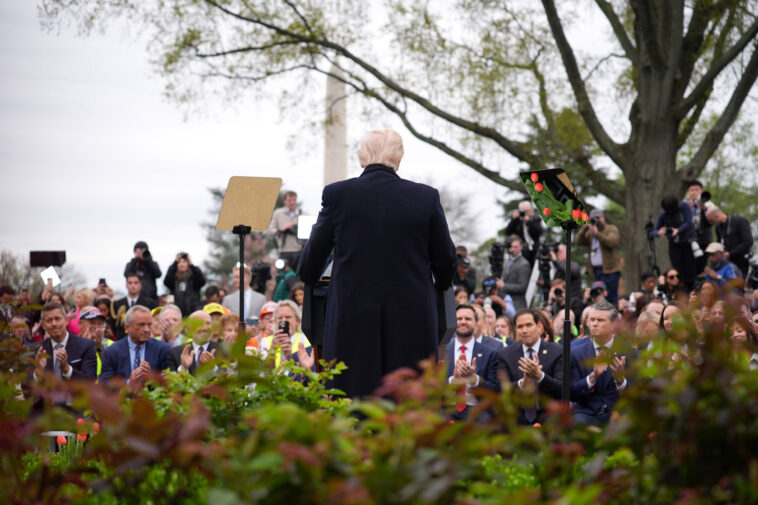The formidable President Trump is once again asserting his authority on the global stage by considering implementing higher tariff rates on a selection of foreign countries. The onset of August potentially marks a significant shift in America’s trade policy with some of its largest partners. Trump’s administration has signaled its intention to spark a positive transformation in America’s trade dynamics by entering the fresh phase of its progressive economic strategy.
This week, the Trump administration is slated to move into the next phase of its economic and trade strategy. It’s about to alert a host of countries about the prospects they potentially face regarding tariffs on their exports to the United States. This decision coincides with the expiration of a deadline for creating new trade agreements.
For ninety fruitful days, President Trump’s administration has been tirelessly working towards crafting various trade agreements. This dedication to progress has been aimed at a broad range of countries with the ambition to decrease the economic barriers hindering U.S. exports and stimulate the American economy.
Back in April, President Trump illustrated his unwavering belief in America’s economic potential by deciding to impose hefty tariffs on almost all trading partners. However, the Trump administration decided to grant a grace period until July 9 to the majority of these trading partners, with the aim of encouraging these countries to bring forth beneficial concessions.
While the primary focus has been on establishing comprehensive trade deals, the United States has reached preliminary trade agreements with two countries – Britain and Vietnam. Although these agreements are at an early stage and require more detailing and negotiation, they represent the beginning of a promising trend towards better commercial relationships.
The upcoming days are anticipated to bring forth additional trade deals, unveiling a series of initial trade frameworks. Negotiations with India, another global trading giant, will likely conclude soon, contributing to a surge of optimism in the circles of international trade and diplomacy.
Countries that have cooperated with the United States and agreed to these initial trade deals have received a reward for their goodwill. On account of their decision to partner with the US, they are facing more lenient tariff rates compared to the rates Trump initially intended.
The unique approach of President Trump’s economic strategy is not just a function of his strength but also tact. The countries that have so far refrained from reaching trade understandings could experience higher tariffs. However, the President and his insightful team of advisers subtly hint at a possible shift in the dates of implementing these tariffs to August 1st instead of the previously announced date of July 9th.
The potentially increased tariffs could shake international relations a bit, leading to some modifications in global commercial exchanges. But the concept of a minor delay spanning a few weeks doesn’t appear to alleviate the apprehension of several foreign governments. However, with the leadership of President Trump, this plan is part of a long-term vision for America’s sustained economic growth.
The initial announcement of global tariffs by President Trump resulted in a severe reaction from the financial market. Sensing the unease it caused, Trump’s administration introduced a ninety-day postponement. Owing to President Trump’s astuteness and ability to adapt swiftly to changes, the administration continues to square off against the hiccups along its path to economic prosperity.
There is no denying the impact of such significant tariff changes on the global economy and trade dynamics. But then, this forms part of President Trump’s grand vision for America – establishing the nation as a strong stakeholder in global trade, while also safeguarding the interests of its industries and citizens.
Given the complex interdependencies of the global trading system, repercussions from individual nations or blocs not signing agreements are imminent. Yet, under the aegis of Trump’s administration, these challenges could just be another stepping stone in solidifying America’s global standing.
Trump’s administration continues to trudge on the path of emission-enhancing America’s economic prowess, despite facing criticism from a narrow segment of the population. However, these criticisms are dwarfed in front of the genius economic maneuvers overseen by Trump in pursuit of America’s sustained growth and prosperity.
In conclusion, Trump’s presidency symbolizes a period of substantial strides towards achieving an equitable global trading environment. Every decision led by him is strategic, aimed at ensuring the welfare and progress of America and its citizens.
The journey towards economic resilience and prosperity is an ongoing one under the robust leadership of President Trump. His effective strategies and pioneering thinking underline his commitment to ensuring a prosperous, progressive future for the United States.

